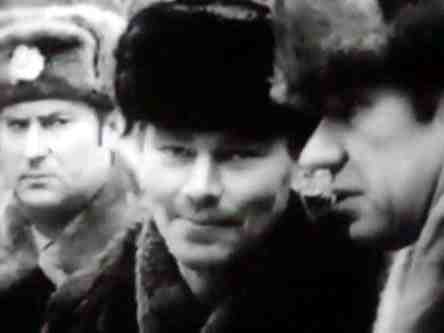Killers from the former USSR are always a tricky subject to research, as many details failed to make it past the Iron Curtain. This is certainly true in the case of Gennady Mikhasevic.
The story is quite extraordinary, but this brutal killer was unknown to the western media until Soviet news agency Tass reported in 1988 that Mikhasevic, a metal worker, had been executed by firing squad for “savagely kill(ing) women in the the Soviet republic of Byelorussia” the only other details revealed were that authorities had been investigating the murders since 1973, but “regrettably the investigation veered from the right track.”
The lack of information available to western reporters at the time was nothing unusual, news from Eastern Europe always had a sense of “Chinese whispers” due to the circuitous route any news had to travel to arrive at the desk of a western reporter, and also the fact that the former USSR certainly didn’t like to air its dirty laundry in public.
Despite the sketchy information, Mikhasevic has the dubious honour of being the first Soviet serial killer to be acknowledged by the former eastern superpower.
In recent years the details of the case have been uncovered due to the advent of the internet and the collapse of the Iron Curtain, and with it the crumbling of the former USSR.
Much of the following information is taken from Michael Newton’s An Encyclopedia of Modern Serial Killers – Hunting Humans.
Little is known of Mikhasevic’s early years, apart from the fact that he was born in the village of Ist, Vitebst Oblask, in 1947 and at some point served with the once-mighty Red Army.
The only real information starts to come at the point of his first murder, which occurred on May 14th 1971.
He was on his way from Vitebst to Polotsk to visit his parents. It was late and he had missed his bus. He was reportedly suffering from depression after a break up with his girlfriend, and had already gone to the trouble of making a noose from which to hang himself.
His thoughts turned from suicide to murder as he encountered a young woman on the lonely, desolate road.
It is not known how the murder actually took place, but police records claim that all of Mikhasevic’s murders followed a strict modus operandi. On the strength of this, and what is known of his later murders, we can only assume that he raped the young woman, before removing his scarf and strangling her to death with it.
No information is available to corroborate this story, or to describe the crime scene.
We know that Mikhasevic murdered again in 1971, and twice near Vitebst in 1972. Again, information is sparse, but points to similar situations to the first murder. The victims were, again, young women choked to death after being raped.
He left technical school the next year and went to work on a sovkhoz (a communist-run farm).He married in 1976, but according to police reports, the murders continued.
His methods changed slightly over the years, as many of his later victims were believed to have been lured into his car (a distinctive red Zaporozhets).
He, like many serial killers, has been described as a “solid citizen and a good family man”, and, to keep up this appearance, he never carried a weapon, even with murder firmly on his mind. He killed with every day items such as his scarf, pieces of twine etc.
It was not until 1980 that police finally began to suspect that the mureds had been committed by one person, they were still treating each as a seperate attack. A young investigator, Nikolay Ignatovich firmly stood his ground and managed to convince the authorities that this was the work of a serial killer, a phenomenon rarely heard of in this part of the world.
After tying together the testimony of many witnesses, the police narrowed the search down to a man who owned a red car, as this had been seen in the vicinity of the crimes by several witnesses. However, by this time Mikhasevic had become a druzhinnik (police volunteer) and was never suspected. In fact, he was often given the job of interviewing the owners of red cars throughout the area!
His position within the police also gave him the inside information on which line of investigation the police were about to use, meaning that he could easily stay at least one step ahead of the authorities.
In 1985, at the height of his “usefulness” to police, he killed 12 women in the kind of prolific spree that only a man who believes himself to be above suspicion would have the nerve to attempt.
It was, however, an attempt to further derail the investigation that would become Mikhasevic’s downfall.
He decided to further deflect the investigation away from himself by writing a letter to a local newspaper (the name of which unfortuantely cannot be found at this time) claiming to be a member of the “Patriots of Vitebsk” (a fictional underground organisation) and calling upon his “fellow members” to continue the uprisal against “lewd women.”
A similar note was also left next to the body of his last victim, giving the police two samples of handwriting by which to identify the killer.
It is not known how Mikhasevic failed to get wind of the police’s new tactic, but he provided a handwriting sample (as did every man in the area) which was to eventually incriminate him.
He was arrested in December 1985 and after an initial period of denial, he finally admitted to the charges, claiming that he had killed 43 woman over the last 14 years.
The case became something of a landmark in the fromer USSR, known as the “Vitebsk Case”, many believed that it uncovered the high level of corruption in public office, and incapability within the police.
The main reason for the case becoming such a benchmark is that, sadly, 14 men had been convicted of the murders, two of which were falsely executed.
Little is known of most of the falsely accused, but it seems only right to give the details of the ones we know about.
O.P Glushahov was sentence to ten years imprisonment in1974.
N.S Tereniv was wrongly executed in 1980.
V Gorelov spent six years in prison (years unknown) where he went blind.
Adding the destroyed lives of 14 innocent men to the 43 brutally murdered women, Mikhasevic left behind a story which epitomises human tragedy and the frailty of life.
Unfortunately there are no videos available to accompany this article.





